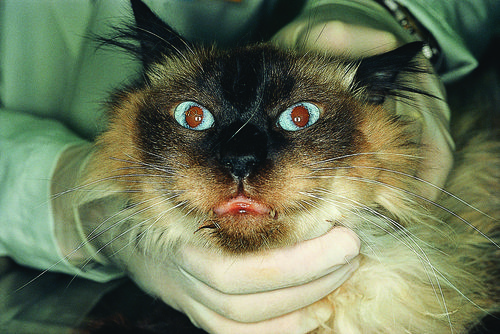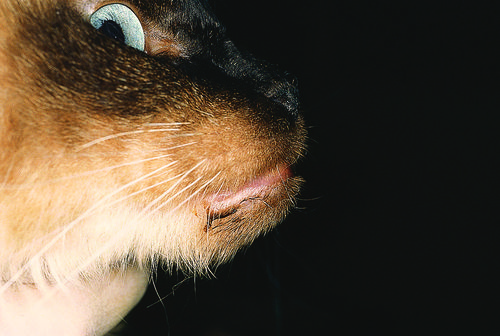Difference between revisions of "Veterinary Dentistry Q&A 07"
(Created page with "[[|centre|500px]] <br /> <br /> <FlashCard questions="2"> |q1=What endocrinopathy should be considered in a cat with insulin-resistant diabetes mellitus, hepatomegaly, and a...") |
|||
| (2 intermediate revisions by 2 users not shown) | |||
| Line 1: | Line 1: | ||
| − | + | {{Template:Manson | |
| + | |book = Veterinary Dentistry Q&A}} | ||
| + | [[File:Vet Dentistry 07a.jpg|centre|500px]] | ||
| + | <br> | ||
| + | [[File:Vet Dentistry 07b.jpg|centre|500px]] | ||
<br /> | <br /> | ||
| Line 13: | Line 17: | ||
Other clinical features that may be present include cardiomegaly, congestive heart failure, nephromegaly, nephropathy (proteinuria, azotemia), renal failure, weight gain/loss, body enlargement, arthropathy, large tongue, and central nervous system signs. | Other clinical features that may be present include cardiomegaly, congestive heart failure, nephromegaly, nephropathy (proteinuria, azotemia), renal failure, weight gain/loss, body enlargement, arthropathy, large tongue, and central nervous system signs. | ||
| − | |l1= | + | |l1=Acromegaly |
|q2=What would be the most likely cause, and how would the diagnosis be confirmed? | |q2=What would be the most likely cause, and how would the diagnosis be confirmed? | ||
|a2= | |a2= | ||
| Line 25: | Line 29: | ||
Computed tomography (CT) or magnetic resonance imaging (MRI) may be used to demonstrate a pituitary mass. | Computed tomography (CT) or magnetic resonance imaging (MRI) may be used to demonstrate a pituitary mass. | ||
| − | |l2= | + | |l2=Acromegaly#Diagnosis |
</FlashCard> | </FlashCard> | ||
Latest revision as of 17:05, 13 October 2011
| This question was provided by Manson Publishing as part of the OVAL Project. See more Veterinary Dentistry Q&A. |
| Question | Answer | Article | |
| What endocrinopathy should be considered in a cat with insulin-resistant diabetes mellitus, hepatomegaly, and a large head with a protruding mandible? | Chronic hypersecretion of growth hormone (GH) results in acromegaly. Growth hormone excesses induce peripheral insulin resistance. Other clinical features that may be present include cardiomegaly, congestive heart failure, nephromegaly, nephropathy (proteinuria, azotemia), renal failure, weight gain/loss, body enlargement, arthropathy, large tongue, and central nervous system signs. |
Link to Article | |
| What would be the most likely cause, and how would the diagnosis be confirmed? | A GH-secreting tumor of the pituitary gland is the most common cause of acromegaly in cats. Hyperadrenocorticism and hyperthyroidism are other endocrinopathies that may be associated with insulin-resistant diabetes and they should be excluded in the diagnostic evaluation of an insulin-resistant diabetic cat. Demonstrating significantly elevated circulating GH concentrations is diagnostic for acromegaly; however, there is limited availability of veterinary laboratories performing feline GH assays. Indirect evaluation of growth hormone concentration by measuring somatomedin C (insulin-like growth factor-1) may be beneficial. A presumptive diagnosis of acromegaly is made when the thyroid and adrenal glands are normal and the cat has characteristic clinical signs and laboratory data, and a pituitary mass is identified. Computed tomography (CT) or magnetic resonance imaging (MRI) may be used to demonstrate a pituitary mass. |
Link to Article | |

